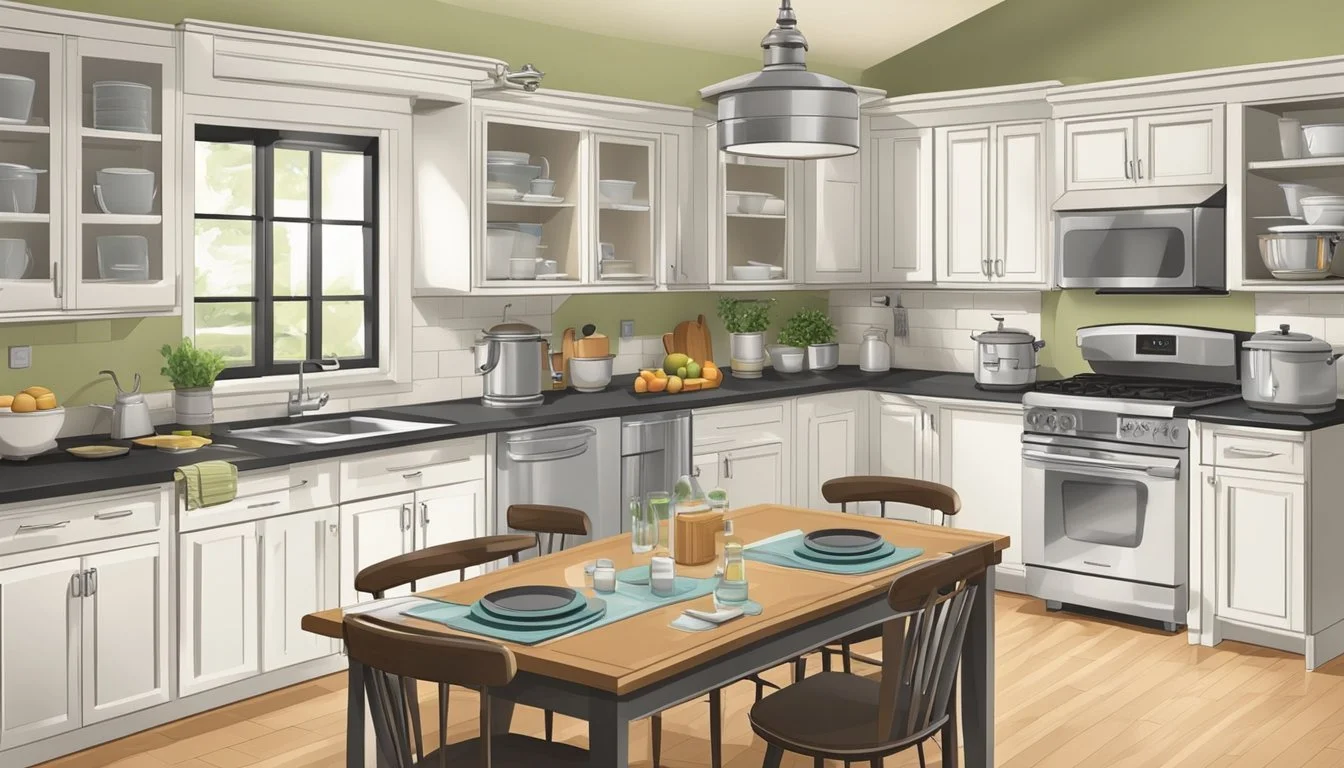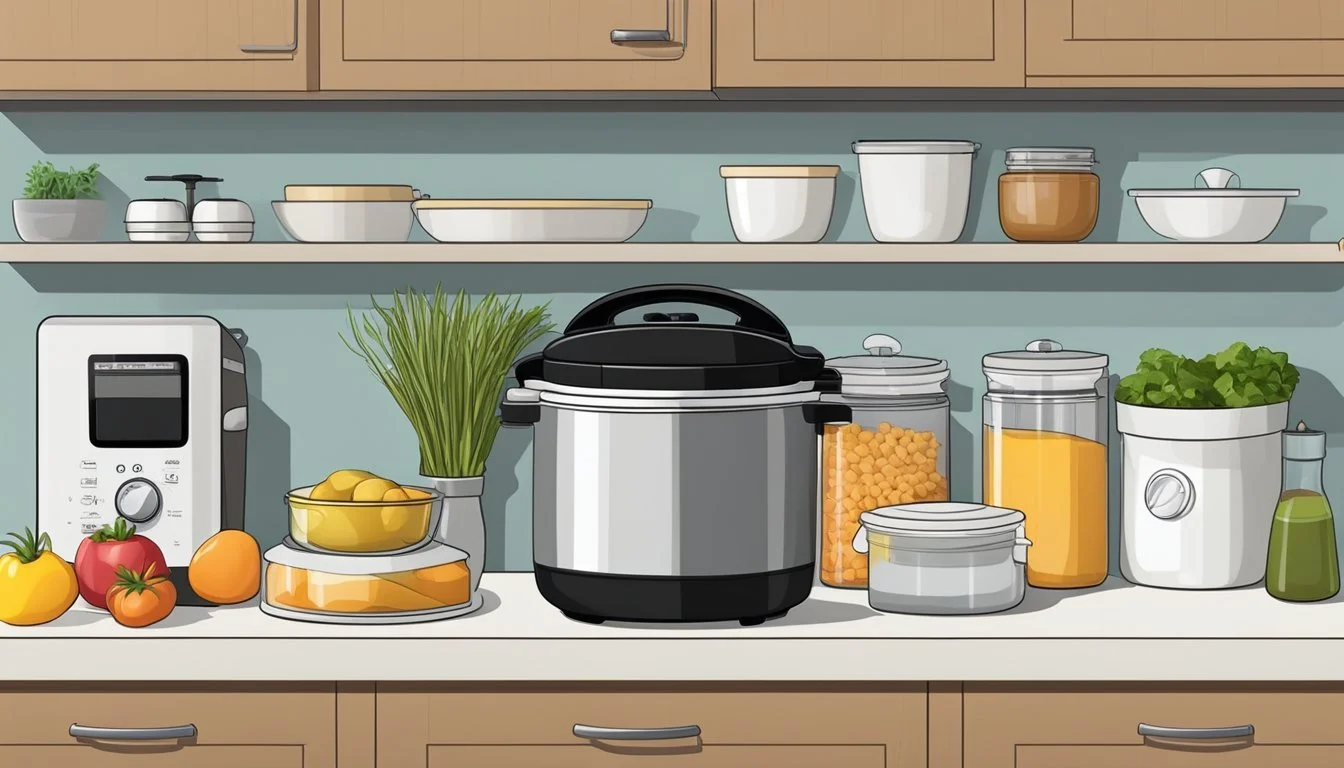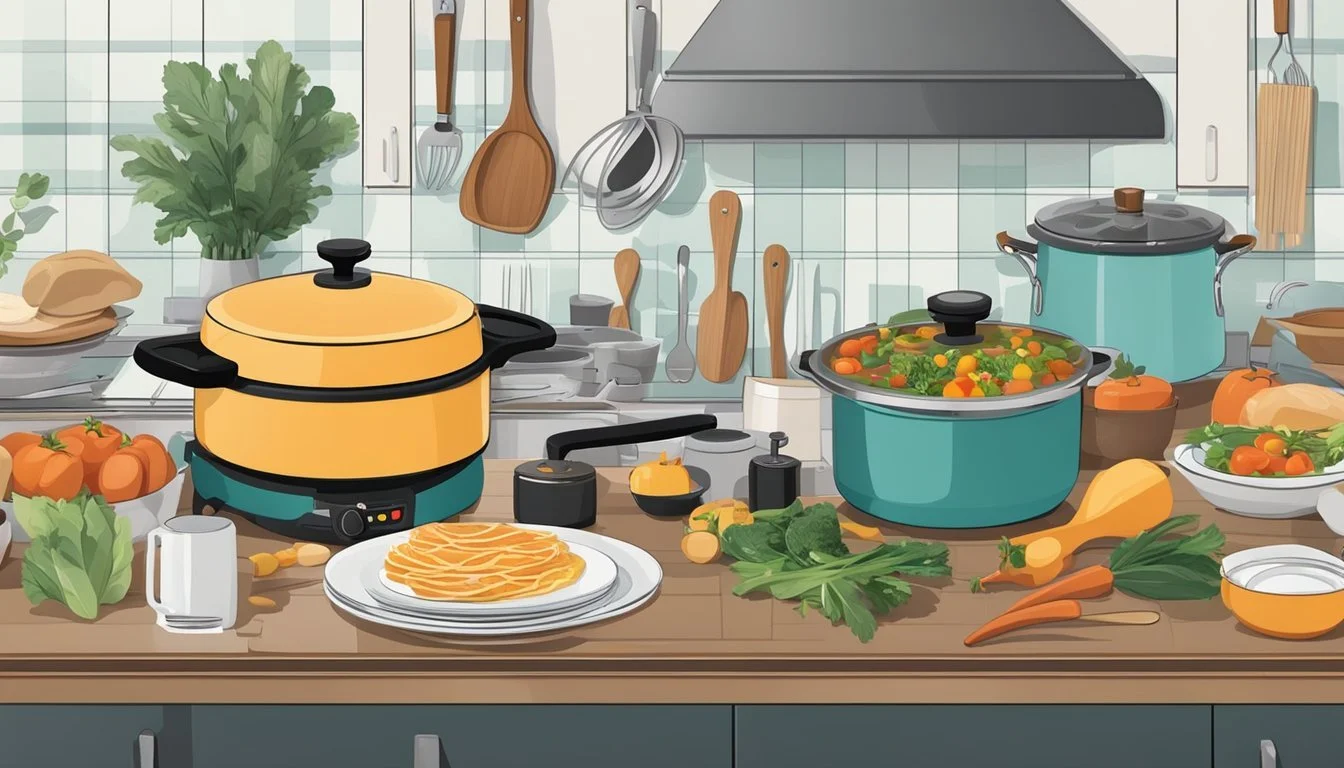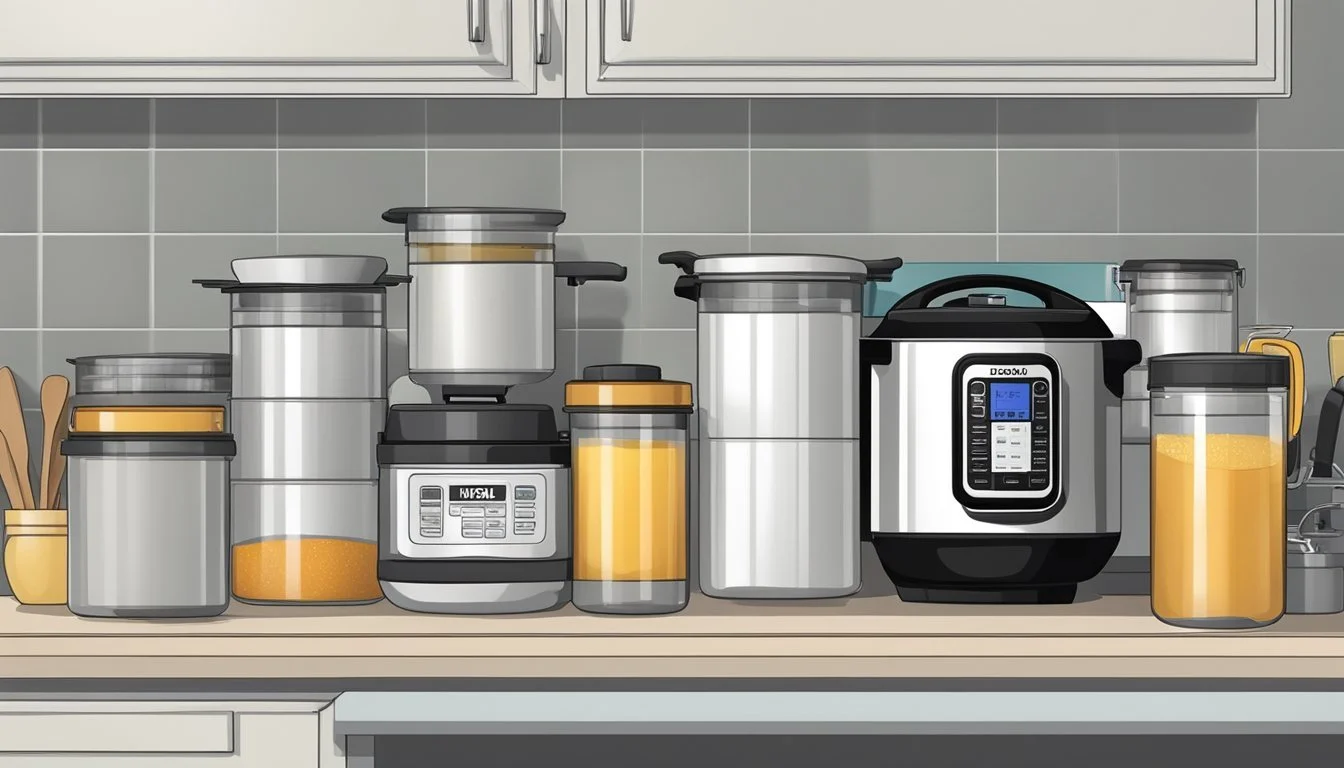How to Organize Your Kitchen for a Dinner Party with a Pressure Cooker
Streamlined Prep Guide
Organizing a kitchen for a dinner (What wine goes well with dinner?) party can be a complex task, but with the right approach, it can also be an efficient and enjoyable one. The use of a pressure cooker in meal preparation is a savvy move for hosts aiming to serve up delicious dishes without spending the entire evening in the kitchen. By employing this handy appliance, they can significantly cut down on cooking time for a variety of recipes, which not only streamlines the meal prep process but also frees them up to focus on other aspects of hosting.
In anticipation of the gathering, organizers should tackle their kitchen organization to ensure a smooth cooking experience. This involves strategically placing utensils, ingredients, and cooking equipment, such as the pressure cooker, for optimal accessibility. Clearing clutter from countertops, organizing ingredients, and prepping tools in advance are key steps in creating an efficient cooking environment. With everything in its rightful place, hosts can more easily navigate the kitchen, maintain cleanliness, and keep their focus on crafting a memorable meal for their guests.
Amidst the bustling activity of party preparation, it is also essential to consider storage solutions for ingredients and leftovers. For instance, managing Tupperware and food containers helps in neatly stowing away pre-chopped ingredients and, later, the surplus food. Implementing these measures in the kitchen not only enhances the workflow but also contributes to a more organized and welcoming space for guests who may wander in for a sneak peek or to offer a helping hand.
Planning Your Kitchen Layout
When organizing a kitchen for a dinner party, it's crucial to establish functional zones and maximize storage space to ensure efficiency and ease of use.
Determining Function Zones
One must identify key areas in the kitchen that will serve specific purposes during the event. The Pressure Cooker Station should be accessible, with ample countertop space and nearby electrical outlets. They should designate zones such as a Preparation Zone for chopping and mixing, a Cooking Zone that houses the pressure cooker and other cooking appliances, and a Serving Zone where dishes can be plated and garnished. Including a Beverage Zone might also be beneficial, where guests can self-serve drinks without disrupting the cooking areas.
Preparation Zone: Keep it close to the sink and provide cutting boards and knife storage.
Cooking Zone: Place it near the stove and pressure cooker with utensils and spices.
Serving Zone: Should have easy access to the dining area, equip it with platters and serving tools.
Beverage Zone: Include a coffee maker, glasses, and a wine rack, away from the busy cooking area.
Maximizing Storage Space
To facilitate a clutter-free kitchen, one needs to utilize efficient storage solutions. Drawer organizers and dividers can be used in pull-out drawers to sort utensils and small tools, making them easy to find and reducing the time spent searching for items. Floating shelves serve as a functional display for frequently used ingredients or equipment, and wall storage systems can free up counter space by holding pots, pans, or utensils. Hidden storage areas, such as toe-kick drawers or integrated bins within the kitchen island, can also be used to store items that are not needed immediately. Additionally, employing lazy susans in corner cabinets and under-sink storage solutions can help make the most of hard-to-reach spaces.
Drawers: Utilize organizers, dividers, and pull-out systems for cutlery and tools.
Shelves: Install floating shelves and use wall racks for extra storage.
Hidden Storage: Consider toe-kick drawers or island bins for less frequently used items.
Corner Cabinets: Fit lazy susans to optimize space efficiency in corner storage.
Pressure Cooking Essentials
Utilizing a pressure cooker can significantly streamline the dinner party preparations. Knowing one's pressure cooker and having the right accessories at hand are essential for efficient cooking.
Understanding Your Pressure Cooker
One must understand the basic operations of their pressure cooker, whether it's an Instant Pot or a stovetop model. They should be familiar with setting the pressure level, adjusting the cooking time, and releasing the pressure safely after cooking. For instance, with an Instant Pot, one might use the "Manual" or "Pressure Cook" button to begin the process, tweaking the duration with the +/- buttons. It's important to await the indicator that shows the cycle has begun.
Essential Accessories for Pressure Cooking
Beyond the pressure cooker itself, a few key accessories can enhance the cooking experience:
Sealing Rings: Having spare sealing rings can prevent flavor transfer, especially between savory and sweet dishes.
Steamer Basket: Useful for vegetables or delicate items that shouldn't touch the bottom of the pot.
Extra Inner Pot: An extra pot allows one to prepare multiple dishes in succession without a cleaning break in between.
Silicone Mitts: These protect hands when handling the hot inner pot or steamer basket.
A well-stocked kitchen may also benefit from small appliances like food processors to chop ingredients or immersion blenders for creating smooth sauces. Cookbooks dedicated to pressure cooking can provide guidance and recipes specifically suited for these devices, helping one utilize their pressure cooker to its full potential.
Organizing for Efficiency
Efficiency in the kitchen, especially when preparing for a dinner party with a pressure cooker, hinges on the strategic placement of tools and ingredients. Proper organization can result in a smooth and stress-free cooking experience.
Implementing Drawer Dividers and Organizers
Drawer dividers and organizers are vital for keeping utensils and gadgets neatly separated and within easy reach. A well-organized drawer saves time by allowing the cook to find items quickly without sifting through clutter. For best use of space, one might consider:
Drawer Dividers: Assign each cooking and prep tool to a specific section within the drawer.
Utensil Trays: Sort utensils by frequency of use, with those needed most kept in top drawers.
Adjustable Organizers: Customize the layout to fit items of various sizes, ensuring that everything from ladles to measuring spoons has its place.
Utilizing Wall and Floating Shelves
Wall-mounted storage and floating shelves serve as perfect solutions for freeing up valuable counter space. They facilitate the organization of ingredients and equipment that are frequently used with the pressure cooker. For optimal organization:
Floating Shelves: Display jars of spices, grains, and other pressure cooker essentials.
Wall Storage with Hooks: Hang ladles, strainers, and other tools that are necessary during cooking.
Chalkboard: Install a chalkboard above the wall storage to jot down steps or needed items for the dinner party recipes.
Command Center: Designate a segment of the wall for a small command center, which could include recipe notes, a timer, and a schedule for course preparation.
By incorporating these dedicated spaces, one enhances not just the kitchen’s look but also its operational flow, making the process of preparing a dinner party both enjoyable and proficient.
Food and Ingredients Management
When organizing a kitchen for a dinner party, especially with the use of a pressure cooker, efficient management of food and ingredients is critical. Proper storage solutions and rotation techniques not only ensure freshness but also streamline the cooking process.
Storage Solutions for Ingredients
Pressure Cooker Considerations:
Prepped Ingredients: Store pre-chopped vegetables in airtight food storage containers. They keep ingredients fresh and are easily stackable.
Bulk Items: Items like rice or beans, often used with pressure cookers, can be kept in labeled glass jars to monitor quantity and maintain dryness.
Refrigerated Items:
Produce: Vegetables like lemons need to be stored in high humidity drawers. Wrap them in a damp towel or keep them in a bowl of water to preserve freshness.
Dairy and Meat: Designate a specific area in the fridge, keeping the temperature consistent to ensure ingredients for the pressure cooker are at peak freshness.
Food Labeling and Rotation Techniques
Labeling Procedure:
Use waterproof labels or tape to mark containers with contents and dates. Clearly labeled containers simplify the cooking workflow and reduce food waste.
Rotation Process:
FIFO Method ("First In, First Out"): Rotate foods so older stock (labeled with earlier dates) is used before newer stock. This is especially important for perishable items.
By implementing robust storage solutions and adhering to effective food labeling and rotation techniques, cooks can maximize the efficiency and safety of their kitchen space during the preparation for a dinner party.
Dinnerware and Cooking Tools
In anticipation of a dinner party, it's essential to have both dinnerware and cooking tools well-organized. This ensures the host can prepare meals efficiently with their pressure cooker, while guests enjoy the aesthetic appeal of a well-set table.
Arranging Dinnerware
For a cohesive look, one should start with a charger or placemat as the base of each setting. The dinner plate takes a central position, with the salad plate and soup bowl on top if the meal calls for them. Highlight the setup with coordinating dish towels folded neatly or draped over the chair backs for convenience and a touch of elegance.
Placemat: Lay as base
Charger/Dinner Plate: Center
Salad Plate: On top of the dinner plate
Soup Bowl: On top of the salad plate if needed
Dish Towel: Coordinated with dinnerware
Organizing Cooking Utensils and Tools
For the cooking portion of the event, an organized kitchen is paramount. A hanging pot rack is practical for easy access to pots and pans while freeing up cabinet space. Utilize wire baskets to categorize and group smaller tools and gadgets, keeping the counters clutter-free. Ensure all utensils are within arm's reach of the pressure cooker for efficiency.
Hanging Pot Rack: For pots and pans
Wire Baskets: For categorizing small tools
Pressure Cooker: Central, with utensils nearby
Decor and Atmosphere
The right decor and lighting are critical in setting the right tone for a dinner party. A combination of functional design and festive flair can transform a kitchen into an inviting space that complements the ease and efficiency of cooking with a pressure cooker.
Setting the Mood with Decor
Selecting the right decor pieces can instantly elevate the aesthetic of a kitchen. For a sophisticated touch, place candles on the dinner table to add warmth and a soft glow. They should be unscented to avoid interfering with the aroma of the food. For shelves, especially cookbook shelves, choose items that are both decorative and practical. Displaying well-bound cookbooks adds a touch of personality and inspiration, while neatly arranged spices and utensils reflect a sense of order and accessibility.
Creating a Functional and Festive Space
When organizing a kitchen for a dinner party, it's essential to maintain a balance between function and festivity. Here's a quick guide:
Countertops: Keep them clutter-free, but use small potted plants or a bowl of fruit as accents.
Dining area: Ensure ample space for guests to move and interact. Use a folding table if needed to optimize space.
Lighting: Combine overhead lights with countertop lamps for a layered lighting effect that's both practical and cozy.
By focusing on these elements, one can create an environment that is welcoming for guests and conducive to the workflow of using a pressure cooker during preparation and service.
Entertaining and Hosting
In the realm of dinner party preparation, the kitchen becomes the heart of entertainment. With the pressure cooker as a trusty ally, the host can streamline the process of creating flavorful offerings with ease, making time for the art of hosting.
Prepping Appetizers and Desserts
The pressure cooker is not only for savory entrees, it can be a powerful tool for creating appetizers and desserts that leave a lasting impression. A host can enhance the flavor and quality of these starters and end-note sweet treats with minimal effort. For appetizers, envision making a batch of savory meatballs or steamy artichoke dips in a fraction of the conventional time. These can be prepared in advance and kept warm within the pressure cooker, allowing the host to mingle with their guests.
On the topic of desserts, a classic cheat: individual chocolate lava cakes or a deconstructed lemon cheesecake—recipes often championed by culinary icons like Ina Garten—can be prepped and cooked quickly in a pressure cooker, providing gourmet indulgence without the day-long commitment.
Efficient Serving Strategies
The key to efficient serving lies in organization and planning. Design a serving strategy that flows as seamlessly as the conversation at the dinner table. Utilize stackable containers to pre-portion appetizers, and have a designated warming area to keep dishes at the optimal temperature. When it comes to serving, consider the layout:
Buffet Style: Designate an area where guests can easily access the pressure cooker among other dishes.
Plated Service: Pre-plate appetizers and desserts to serve them directly to each guest.
For both serving methods, ensure that utensils and plates are ready to go, and that there's a clear and logical system for guests to follow, which keeps the focus on the enjoyment of the evening.
Final Touches
In preparing for a dinner party, the organization of the kitchen is crucial for a seamless event, especially when using a pressure cooker that requires attention to detail. On the day of the dinner party, one must follow a structured checklist and make last-minute adjustments to ensure everything is in place for a memorable experience.
The Day-Of Checklist
Verify that the pressure cooker is properly assembled and all parts are functioning.
Stock the rolling cart with essentials such as serving utensils, condiments, and a selection of seasonings for easy accessibility.
Ensure ingredients for each dish are pre-measured and organized for efficient use of the pressure cooker.
Double-check that the kitchen, including floors, counters, and appliances, are clean and presentable.
Confirm the arrangement of cooking tools and dinnerware is convenient for serving and hosting.
Last-Minute Adjustments
Adjust the kitchen lighting to create a welcoming ambiance for the guests.
Check the pressure cooker's settings one final time before the cooking process begins.
Rearrange any items on the rolling cart to ensure the most frequently needed are at arm's reach.
Giving the main bathroom a quick review to confirm it's well-stocked and tidy for guests.
Position the rolling cart strategically to facilitate smooth serving transitions throughout the dinner party.





